For the 2025 school year, there are 2 public middle schools serving 484 students in Whiteville City Schools School District. This district's average middle testing ranking is 6/10, which is in the top 50% of public middle schools in North Carolina.
Public Middle Schools in Whiteville City Schools School District have an average math proficiency score of 54% (versus the North Carolina public middle school average of 48%), and reading proficiency score of 48% (versus the 50% statewide average).
Minority enrollment is 63% of the student body (majority Black), which is more than the North Carolina public middle school average of 56% (majority Black and Hispanic).
Overview
This School District
This State (NC)
# Schools
5 Schools
882 Schools
# Students
2,051 Students
494,023 Students
# Teachers
150 Teachers
31,644 Teachers
Student : Teacher Ratio
14:1
14:1
District Rank
Whiteville City Schools School District, which is ranked within the top 50% of all 320 school districts in North Carolina (based off of combined math and reading proficiency testing data) for the 2021-2022 school year.
The school district's graduation rate of 85-89% has stayed relatively flat over five school years.
Overall District Rank
#145 out of 325 school districts
(Top 50%)
(Top 50%)
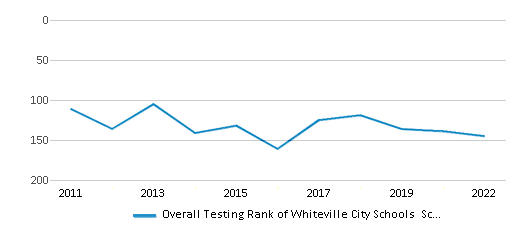
Math Test Scores (% Proficient)
58%
51%
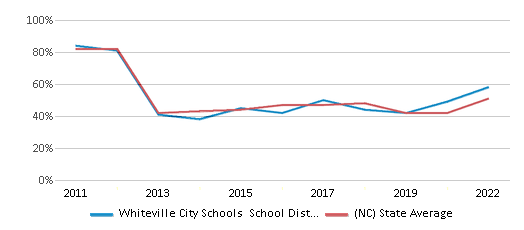
Reading/Language Arts Test Scores (% Proficient)
46%
50%

Science Test Scores (% Proficient)
59%
63%
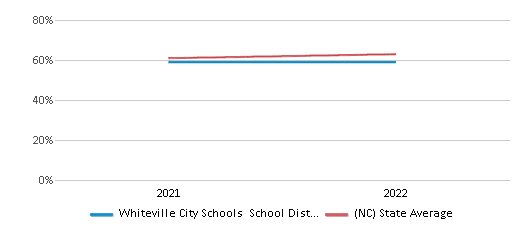
Graduation Rate
85-89%
86%
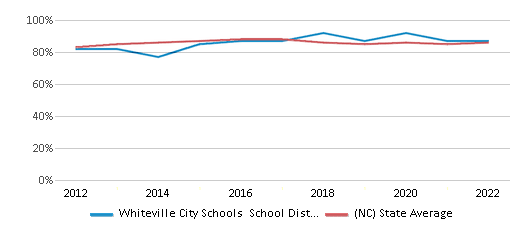
Students by Ethnicity:
Diversity Score
0.67
0.71
# American Indian Students
21 Students
5,633 Students
% American Indian Students
1%
1%
# Asian Students
10 Students
19,933 Students
% Asian Students
1%
4%
# Hispanic Students
253 Students
98,873 Students
% Hispanic Students
12%
20%
# Black Students
820 Students
122,407 Students
% Black Students
40%
25%
# White Students
799 Students
215,701 Students
% White Students
39%
44%
# Hawaiian Students
n/a
646 Students
% Hawaiian Students
n/a
n/a
# Two or more races Students
148 Students
30,848 Students
% of Two or more races Students
7%
6%
Students by Grade:
# Students in PK Grade:
53
1,882
# Students in K Grade:
130
16,660
# Students in 1st Grade:
144
16,806
# Students in 2nd Grade:
165
17,050
# Students in 3rd Grade:
142
16,530
# Students in 4th Grade:
139
16,849
# Students in 5th Grade:
159
19,618
# Students in 6th Grade:
159
111,560
# Students in 7th Grade:
147
116,793
# Students in 8th Grade:
164
119,029
# Students in 9th Grade:
173
12,380
# Students in 10th Grade:
171
10,877
# Students in 11th Grade:
172
9,420
# Students in 12th Grade:
133
8,569
# Ungraded Students:
-
-
District Revenue and Spending
The revenue/student of $13,243 is higher than the state median of $11,187. The school district revenue/student has stayed relatively flat over four school years.
The school district's spending/student of $12,587 is higher than the state median of $11,612. The school district spending/student has stayed relatively flat over four school years.
Total Revenue
$27 MM
$17,307 MM
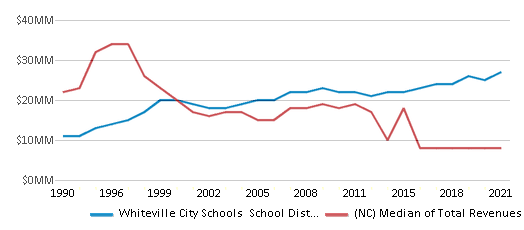
Spending
$26 MM
$17,964 MM
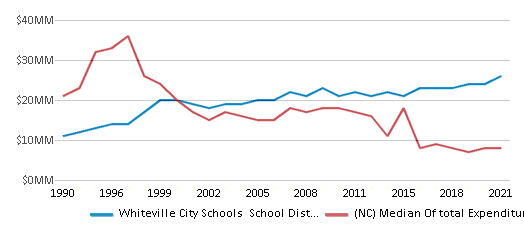
Revenue / Student
$13,243
$11,187
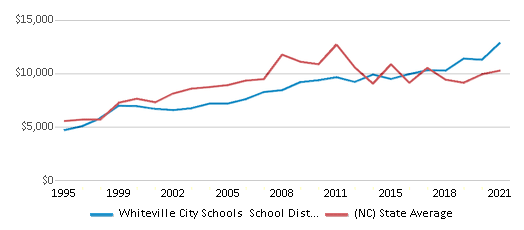
Spending / Student
$12,587
$11,612
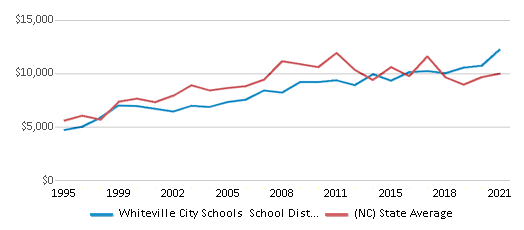
Best Whiteville City Schools School District Public Middle Schools (2025)
School
(Math and Reading Proficiency)
(Math and Reading Proficiency)
Location
Grades
Students
Rank: #11.
Central Middle School
(Math: 54% | Reading: 48%)
Rank:
Rank:
6/
Top 50%10
310 S Martin L King Jr Ave
Whiteville, NC 28472
(910) 642-3546
Whiteville, NC 28472
(910) 642-3546
Grades: 6-8
| 461 students
Rank: #22.
North Whiteville Academy
Alternative School
(Math: <50% | Reading: <50%)
Rank:
Rank:
6/
Top 50%10
310 S Martin Luther King Jr Av
Whiteville, NC 28472
(910) 914-4161
Whiteville, NC 28472
(910) 914-4161
Grades: 6-12
| 23 students
Recent Articles

Year-Round Or Traditional Schedule?
Which is more appropriate for your child? A year-round attendance schedule or traditional schedule? We look at the pros and cons.

Why You Should Encourage Your Child to Join a Sports Team
Participating in team sports has a great many benefits for children, there is no doubt. In this article you will learn what those benefits are.

White Students are Now the Minority in U.S. Public Schools
Increasing birth rates among immigrant families from Asia and Central and South America, combined with lower birth rates among white families, means that for the first time in history, public school students in the United States are majority-minority. This shift in demographics poses difficulties for schools as they work to accommodate children of varying language abilities and socio-economic backgrounds.





